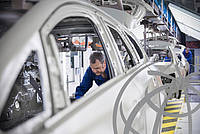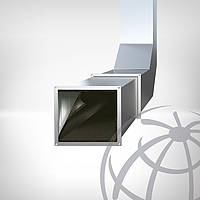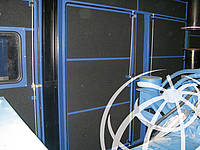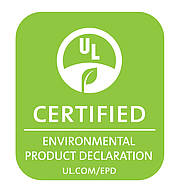HIGH PERFORMANCE ACOUSTIC ABSORBER FOR A QUIETER ENVIRONMENT
Acoustic insulation for HVAC noise - ArmaComfort
ArmaComfort is a fibre-free acoustic insulation solution. Maximised noise absorption at key "nuisance frequencies." A proven alternative to complex "foam-barrier" multi-layers. Visco-elastic properties to help dampen resonance effects in metal panels. Reduces structure-borne noise transmission when used as isolation pads. Used in linings for automotive and heating, ventilation and air-conditioning (HVAC) systems that generate noise as well as acoustic enclosures.
Key features of ArmaComfort
-
Effective air-borne sound absorption across a broad frequency range to minimise HVAC noise
-
Acoustic insulation that is fibre-free, open-cell material with complex pore geometry
-
Flexible and light weight, suitable for linings in HVAC duct systems
-
Offers additional barrier performance, vibration damping and de-coupling (isolation) properties for a noise-free environment
Where does noise in a building come from?
Noise is commonly defined as a loud or unpleasant sound that causes a disturbance. This is a deceptively simplified description of a much larger problem as noise has been proven to impact our work and learning environments. Studies have shown that noise exposure increases general stress levels and aggravates stress-related conditions such as high blood pressure, coronary disease, and migraine headaches. Noise also disrupts our sleep, which would affect our mood, productivity, and learning the following day.
Noise can be generated from air-borne sound or structure-borne sound. Air-borne sound is the noise you can hear and it can and will travel anywhere where the air is present. A simple example of this is the sound generated from a radio which travels through the air in the form of pressure waves and is received by the person listening to it.
Structure-borne sound results from a physical vibration of materials caused by some impact or other forms of mechanical excitation. This could be a hammer striking a wall or a piece of equipment striking an uninsulated air duct, for instance. Although you can hear the noise created from the impact, this is actually the result of vibration (structure-borne sound) that travels through a solid material (the wall) and is re-radiated as air-borne sound.
Are air-borne sounds and structure-borne sounds related?
Air-borne and structure-borne sounds are related as structure-borne sounds can cause air-borne sounds and air-borne sounds can cause structure-borne sounds when it causes the surrounding surfaces to vibrate.
Consider the example of an uninsulated metal air duct: as the surface would vibrate easily, it provides a structural and an air-borne path for HVAC noise generated by HVAC equipment like fans and chillers. It is also capable of transmitting noise from other sources in the building like footsteps in the corridor or discussions in rooms. The air-borne to structure-borne conversion can repeat multiple times until the source of the sound is removed or absorbed.




